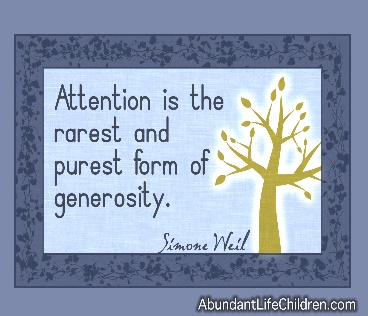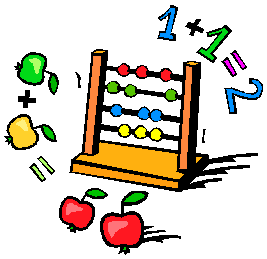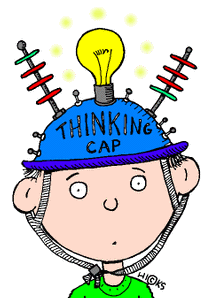Attention - Its Importance in Making Connections
Posted on June 17, 2016
0 comments 9990 Views
By Lyn Ayer
Originally published in the Oregon Deafblind Project May 2016 Newsletter.
 In Lyn Ayer’s
previous blog post, she looked at how touch informs vision and hearing, especially for children who are deafblind. In this blog, she explores what it means to get, and sustain, someone’s attention. “This is
critical for any learning to happen,” says Dr. Ayer.
In Lyn Ayer’s
previous blog post, she looked at how touch informs vision and hearing, especially for children who are deafblind. In this blog, she explores what it means to get, and sustain, someone’s attention. “This is
critical for any learning to happen,” says Dr. Ayer.
This article is filled with online resources for those who would like to delve deeper into the topic. Although this article is framed around the needs of people who have deafblindness, the concepts can easily be generalized to all people.
ATTENTION!

Attention is
something we all seek in some shape or form. And it is something we give
others in order to make that essential connection with them. So when thinking
about attention, we need to think about relationships, our desire to connect
and to be connected to people, but also to things, and places. But it is not that
simple.
Attention is a complex and multi-dimensional process. So if we need to have a child who is deafblind pay attention, we need to understand it better – and determine how best it will work for a specific child. If we can think about ourselves – and how we attend or how we need to attend better – it often helps us figure out what might be tried with a child.
Here are a few random thoughts about this phenomenon.
Think about each of these in the context of yourself, and then how it might impact a child who is deafblind.
1. Attention is
born in utero.
We begin to alert to sensations well before being born. In the last issue we talked about touch and how the yet unborn baby not just alerts to touch, but reacts to it – even grimacing when a doctor pushes him around to get a better ultra- sound picture! They react to moods too, and to mothers who smoke. Look at these images and listen to this information:
- Do an online search “Baby grimacing in utero during ultrasound scan.”
- Interesting that there are “womb sounds” recorded – to use to calm a baby after he/she is born: https://www.youtube.com/watch? v=DaiLpUZ2DNY – and others on the same page. Someone even superimposed music to the womb sounds! https://www.youtube.com/watch? v=fIdXwD0WqU0
- Fetuses recognize Mom’s voice – responding with increased
heartbeat: http://abcnews.go.com/Technology/story?id=97635&page=1

Attention is affected by behavioral states. Internal state mirrors the external level and intensity of attention (engagement).
- Educational information: What are biobehavioral states and how can one apply this in one’s evaluation and work with children - http:// documents.nationaldb.org/products/dish- biobehavioral.pdf
- Information on behavioral states in a newborn: http://www.livestrong.com/article/526861-the-6-behavioral-states-of-a-newborn/
- Research base: http://onlinelibrary.wiley.com/doi/10.1002/cphy.cp010414/abstract - http://eric.ed.gov/?id=EJ961787
It is influenced by sleep-wake cycles (circadian rhythms).
- An interesting article on ADHD and circadian rhythms: http://scicurious.scientopia.org/2012/10/03/marching-to-a-different-beat-adhd-and-circadian-rhythms/
- Some good advice on sleep: http://www.fammed.wisc.edu/files/webfm-uploads/documents/outreach/im/handout_sleep.pdf
- And from the National Sleep Foundation, an excellent downloadable publication, Sleep-Wake Cycle: Its Physiology and Impact on Health: https:// sleepfoundation.org/sites/default/files/ SleepWakeCycle.pdf
3. Attention is a
social phenomenon.
A child responds to social input and not just objects. A baby bottle is not just a bottle, and it does get attention because a baby is hungry; but it is the interaction with the person who provides the bottle that is even more significant. So a child knows that when a bottle “appears”, Mom is providing this. So while attention is focused on the bottle because of hunger, the emotional attention is with Mom.

- Attention is a sign of interest.
- It is also the sign of respect for another person or persons.
- Attention makes imitation possible. If the child is making sounds or moving in a specific way – imitating the child is a great way to get attention and to then try and get the child to imitate you.
5. We don’t just “attend” with our eyes and ears — but with whole-body awareness.
- Body language, facial expressions, eye contact are all connected to attention.
-
We shift between MODES of attending. For example, visual following
(tracking, pursuit) may be accompanied or followed by manipulation (touch).
- There’s even a Pinterest page on whole body attending! Take a look: https://www.pinterest.com/elizasautter/whole-body-listening-attention/
- Research — how the body and eyes connect in attention — some interesting thoughts will pop into your mind!!: https://www.youtube.com/watch? v=gLzqtUE87v8 - Here’s an article that goes with that video: http://joergmueller.info/pdf/Ubicomp15WalterAnalyzing.pdf
6. Attention is contextual.
We respond to
consistency. Take a look at this quick video of a teacher doing the SAME THING,
every single time — to get attention: https://www.teachingchannel.org/videos/student-attention-getting-tip - Apply this to what you might do with a child who is deafblind.
Consistency is a powerful tool and is something that we know helps a child
who is deafblind. Help create this consistency!
When there is vision, it helps
cue a person — such as in these articles/research:
But if a child cannot really make good use of vision (and/or hearing) for this purpose — what then? How do we ensure a connection to the context? Can we represent spatial contextual in such a way that those memories are stored? http://journals.plos.org/plosone/article?id=10.1371/journal.pone.0065601
7. Incidental learning occurs when there is attention.
You can create situations to have this occur – without you actually intervening. For example, sit with your arm just barely touching the child, and play with something that vibrates through your arm and reaches the child. This allows the child to know that there is something interesting in the environment – and the child might use your arm to find it. Here’s a discussion on what “incidental learning” is: http:// psychology.wikia.com/wiki/Incidental_learning
It is not
surprising that persons like Maria Montessori, and Lilli Nielsen (and other
educators) used the idea of incidental learning to create their philosophies of
learning, their equipment and how they approached children. Incidental learning
seems to become embedded in a child’s memory, especially if they are really
attending closely. There is research to show that directing attention to
incidental learning tasks helps a child learn.
- This site has some good ideas for our students: http://www.familyconnect.org/info/education/tips-for-families/incidental-learning/125
- Listen to Sharon Sacks discuss the connection between the development of social skills and incidental learning: http://www.perkinselearning.org/videos/webcast/developing-social-skills-in-children-blind-visually-impaired
- And here’s a useful article from Texas School for the Blind and Visually Impaired (TSBVI) on how to incorporate incidental learning to enhance literacy skills: http://www.tsbvi.edu/seehear/fall05/essential.htm
8. Attention is stirred and enhanced by memory, especially if there is an emotional connection.
If we are to retain memory in an accessible state, we need to ensure attention. Take a look at this research: http://www.psy.vanderbilt.edu/students/fougnidl/Fougnie-chap1.pdf.
“Attention and memory cannot
operate without each other” says the first line of this research article: http://ntblab.princeton.edu/wp-content/uploads/2015/01/Chun_CONB_2007.pdf
And this one looks at memory, emotion and attention: http://www.ncbi.nlm.nih.gov/pmc/articles/PMC2275659/

Of course this research is more complex than we need. If we were, very simply, to ensure we have a child’s attention each teachable moment, we are assisting the child to put the information first into working memory (while still engaged in the task) and then into long-term. If the experience is enjoyable too, retention in memory is more certain.
9. Attention is
more likely to happen when there is motivation and cognition involved.
The following paper looks at the emotion-attention-cognition connection: http://cms.unige.ch/fapse/neuroemo/pdf/BroschSchererGrandjeanSander_smw-2013.pdf
The best learning happens when there is attention. So – get that attention before you begin anything! You could use something to indicate, “please pay attention.” For example, one intervener effectively used a shiny wand with sparkly streamers – held and shaken in the periphery until the child “saw” it, and then brought it in front. After that, she would begin an activity such as reading a story together.
If sounds are attractive to a child, then a singing bowl, drums or a percussion instrument might also work the same way. Take a look at this blog: http://www.smartbrief.com/original/2013/09/zen-attention
Attention leans towards the preferred and liked – our interests. So, using a “likes” list would be a good idea - to determine what objects are worth attention, or perhaps what properties of object are attractive (e.g., brightness, lighted, vibrating, sounds that can be detected).
10. We need to use attention less when something has truly become routine.
There is research to show that there is decreased attention to something familiar. We have probably had the experience of driving to work on our day off, just because we were on “automatic pilot” once we got in the car!
Novelty “wakes up” attention. So does physical activity. Physical activity should become an integral part of the “routines” of a day. The following article talks about physical activity being good for focus in children with ADD or ADHD. Exercise is not just good for firming up the body, but also for firming up the brain, enabling a child to pay attention better. It is an “inexpensive, self-prescribed, and accessible alternative” to medication: http://www.additudemag.com/adhd/article/3142.html
Take a look at the National Center on Deaf-Blindness’ OHOA modules — especially module 9 — which is on routines and how significant this is for children who are deafblind to move forward with their learning. https://nationaldb.org/wiki/page/9/652#ohoa - As each routine is mastered, a child can move on.
11. Attention
is necessary in order to choose, shifting between two or more things.
So be aware of what you are doing when you have children interact in choice-making activities. Are they truly shifting from one thing to the other? Are you giving them enough time to take in each choice? Are the choices equally attractive – or perhaps deliberately not?
12. ATTENTION
is essential for observation.

Some suggested reading for information on Attention and connected ideas:
- Dr. Jan van Dijk on attention: https://www.drjanvandijk.org/downloads/strategies_in_deafblind_education.pdf
- Attention in Early Development: Themes and Variations. (1996). Oxford University Press. Authors: Holly Alliger Ruff & Mary Klevjord Rothbart)
- Watch this webcast from Perkins - also Dr. Jan van Dijk: http://www.perkinselearning.org/videos/webcast/child-guided-assessment

There are degrees of attention. This is why you need to vary what you do, what is being presented. Novelty definitely helps to refocus attention. You could even vary the intensity to create more interest – e.g., vary size, brightness, patterns.
There is, of course, a negative side to attention – such as when we are preoccupied, distracted (under-focused), obsessed (over-focused), perseverative (difficulty shifting focus), or have a clinical condition such as attention deficit disorder.
Attention Seeking
Syndrome – This is real! Go ahead – Google it!
Click here to learn more about the Oregon Deafblind Project.

Click here to read Lyn Ayer's previous TRI blog post, How Touch Informs Vision and Hearing.
Recent Blog Posts
Project Spotlight: Creating Supports for Survivors of Gender-Based Violence Jun 6, 2018
Project Spotlight: Investigating Executive Function Concerns in Infants and Toddlers May 23, 2018
Project Spotlight: Reaching Out to an Underserved Population May 9, 2018
Project Spotlight: Fighting Against Gender-Based Violence Mar 14, 2018
Project Spotlight: Increasing Diversity in Early Childhood Educators Feb 7, 2018